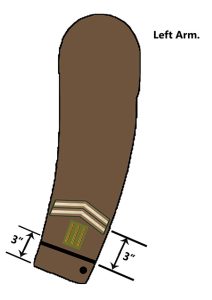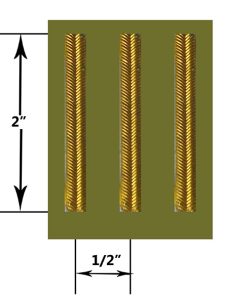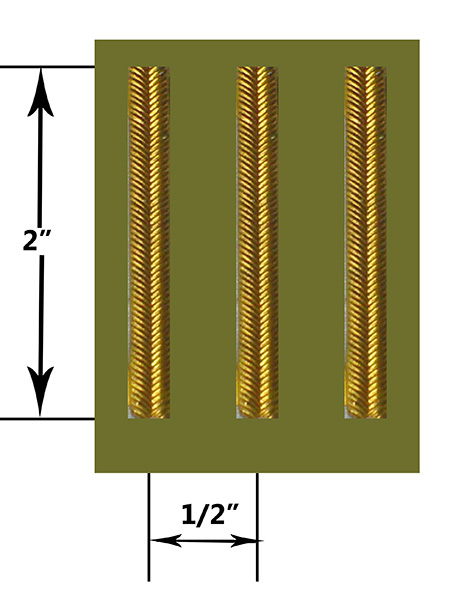Wound Stripes
Ask any serviceman or woman and the one thing they love the most is recognition for their service. A simple “Thank you for your service” can go a long way for a Service Person.
I’m sure you are all familiar with the White Feather Campaign and the branding of men who didn’t sign up in the First World War as cowards. Well this became such a problem that HM Government began issuing and providing recognition for Servicemen wounded in battle and subsequently discharged. The Silver War Badge, became a staple symbol to say that “I’ve done my part!” But this was only for those who were discharged and returned home.
What about troops that remained at the front having recovered from their wounds?
In August 1916, coincidentally a month after the massacres on the battlefields of the Somme, the British Army began issuing wound stripes to Allied Soldiers and Officers who had been wounded in combat or campaigns since 4th August 1914.
To qualify a serviceman had to have been listed in a casualty list as “Wounded” or “Wounded – Gas” for example. Reports of the same in Hospital Lists were not regarded as authoritative enough for the award of a wound stripe. Accidental, or self-inflicted wounds did not qualify a soldier for a wound stripe either, however on could be awarded a wound stripe for shock if they were marked in the casualty list as “Wounded – Shock, Shell”.

The first wound stripes were issued in Brass in 1916, with approval from King George V however there were also cloth versions available for use on Battle Dress uniform. The stripes were stitched perpendicularly on the left forearm sleeve of the service dress jacket or Battle Dress Blouse.
Each stripe indicates a separate incident of wounding, subsequent stripes being placed on either side of the original at half inch intervals.
Theoretically there was no limit to the number of wound stripes a serviceman could be awarded and a red braid was often substituted to indicate any number of previous wound stripes.
By the end of the war, wound stripes were awarded for campaigns prior to the First World War as well however it was short lived as the awards were phased out in 1922.
They were reintroduced for the Second World War, February 1944, but were again discontinued with that war’s ending. No wound stripes have been awarded since the end of the Second World War to British soldiers. However Commonwealth nations continued to use the stripe for some years afterwards, with Canada continuing the practice right up to 1990. The stripe in Canadian service was eventually replaced by the Sacrifice Medal. there has been no similar replacement for British Forces.
If you’re having trouble identifying badges on a British Serviceman in a photograph you have, try sending it over to us via the Photo Expert Help button available in the menu on the left side of any page on the Forces War Records website. Very often our expert staff can date a picture just by looking at specific badges, or what kind of uniform the serviceman is wearing, even weapons can be a good indication of a date.



